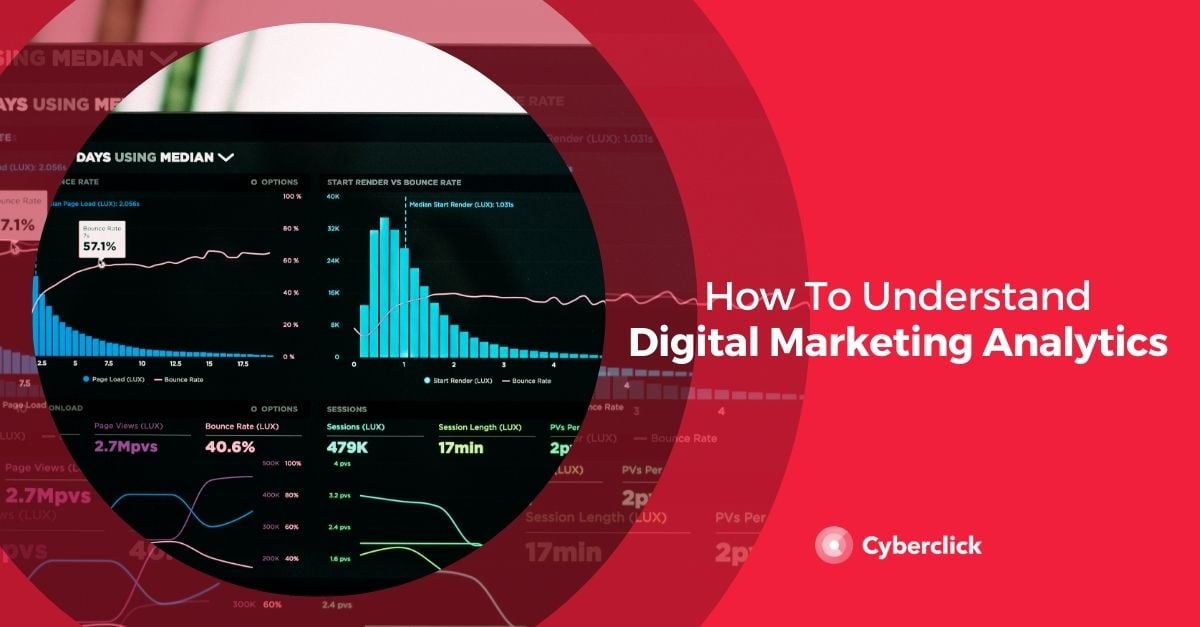If you do digital marketing without marketing analytics, you are wasting time and money.
Cookies, web visits, social media activity... marketers have a lot of information about users, but many brands still don't know how to take advantage of it.
Without proper marketing analysis, it is impossible to know what is happening with your campaigns what isn’t. That's why we're going to look at some keys to understanding and measuring marketing analytics that will help you be a more efficient marketer.

What Is Marketing Analytics?
Marketing analytics is the practice of measuring, managing and analyzing the marketing results of your business in order to optimize them. It does this by using information collected through different channels to create a unified view.
This allows marketers to obtain information with which to draw conclusions that guide their next actions and make them more effective.
Marketing analytics covers a multitude of metrics or key performance indicators (KPIs). Some examples include:
- The return on investment or ROI: A percentage that expresses the profitability of a specific marketing campaign according to its ability to obtain conversions.
- The average life time value or LTV: The income that a given customer brings to the company during the entire time that they are buying its products or services.
- The cost per acquisition or CPA: The cost of converting a new user into a customer of the company.
Why is Marketing Analysis Important?
- Because it converts data into information. Today, most companies have access to customer data in one way or another. But in order to take advantage of it, it needs to be analyzed, processed, and turned into useful conclusions for your business.
- Because it helps you compare actions and channels. Marketing analytics allows you to compare different sets of data with each other and answer questions such as whether it's more profitable to advertise on Google or social media, or which demographic groups convert most. In this way, you can focus your budget on what gives the best results.
- Because it allows you to back up your claims. When it comes to getting a budget for a new SEM campaign, it's much more convincing to say that the last Google Ads campaign had a 250% ROI than simply stating that paid advertising brings more customers. Moreover, with the right analysis, you can not only explain what happened, but also why.
- Because it helps you achieve your marketing goals. All online marketing actions should be oriented to an overall objective, for example, to increase lead generation or sales. Marketing analytics makes it possible to know how we are progressing on that path and to correct the course whenever necessary.
7 Good Practices For Marketing Analytics
Marketing analysis is both a science and an art. It involves gathering information, and then knowing what to do with the data you’ve collected. Here are 7 best practices of marketing analytics:
- Take A Strategic Approach
- Segment Your Data
- Understand Your Business
- Monitor the Quality of the Data
- See What Doesn’t Work
- Avoid Biases
- Think About the Future
1. Take A Strategic Approach
The amount of data you can collect with marketing analytics tools is simply overwhelming, so you need a system to filter and focus on the essentials.
To achieve this, one of the first steps in the analysis will be to establish your primary and secondary KPIs based on your objectives. This way you will know, for example, that what matters is the click rate on a link to your landing page and not the "Like" number on a Facebook post.
2. Segment Your Data
If you segment your visitors and customers according to their characteristics or behavior, you will have much more specific data and you will be able to see things more clearly.
On a demographic level, you can filter users by age, gender, education level, family situation and much more. And in terms of their behavior, it might make sense to see how your regular customers compare to those who abandon their cart on their first purchase, for example.
3. Understand Your Business
There is no single way to do marketing analytics, but each company and each sector has a particular situation.
Therefore, before deciding how you are going to focus your analysis, you have to think about what makes sense for your business: whether it is a B2B or B2C company, in which sector it is located, what type of audience you are targeting, what is the customer's journey like?
4. Monitor the Quality of the Data
In marketing analytics more doesn't always mean better. You don't always need to have more data, but better data. These parameters will help you evaluate the quality of your data:
- Is it up-to-date? Online marketing operates almost in real time and consumer habits can change in a very short time, so you have to keep up to date.
- Are they complete, or do they have gaps that need to be taken into account?
- Are they error-free?
- Are they accurate enough for the analysis you want to make? If not, is it possible to segment them further?
- Are they relevant to your marketing objectives?
5. See What Doesn't Work
Marketing analytics allows us to identify our strengths, but it is equally important that we can see what is not working. For example, if there is a sudden drop in sales, you must analyze the data to try to find the reason and put a solution to it as soon as possible.
6. Avoid Biases
Although it may seem that marketing analytics is a 100% objective science, the truth is that people are not. When we have a lot of data at our disposal, it can be very tempting to focus on the data that matches our previous hypotheses. Try to be aware of this possible error and focus on the KPIs you have previously defined.
7. Think About The Future
We can distinguish between two major types of marketing analytics: the descriptive and the prescriptive. The former helps us to know what is going on, but the latter is the one that is really valuable for the company's results. Predictive analysis allows us to answer questions such as
- Would you have better results if you invested more money in this campaign?
- Does it make sense to move this same campaign to another platform?
- How many conversions can I expect in this new market?
CEO y cofundador de Cyberclick. Cuenta con más de 25 años de experiencia en el mundo online. Es ingeniero y cursó un programa de Entrepreneurship en MIT, Massachusetts Institute of Technology. En 2012 fue nombrado uno de los 20 emprendedores más influyentes en España, menores de 40 años, según la Global Entrepreneurship Week 2012 e IESE. Autor de "La empresa más feliz del mundo" y "Diario de un Millennial".
CEO and co-founder of Cyberclick. David Tomas has more than 25 years of experience in the online world. He is an engineer and completed an Entrepreneurship program at MIT, Massachusetts Institute of Technology. In 2012 he was named one of the 20 most influential entrepreneurs in Spain, under the age of 40, according to Global Entrepreneurship Week 2012 and IESE. Author of "The Happiest Company in the World" and "Diary of a Millennial".






Leave your comment and join the conversation